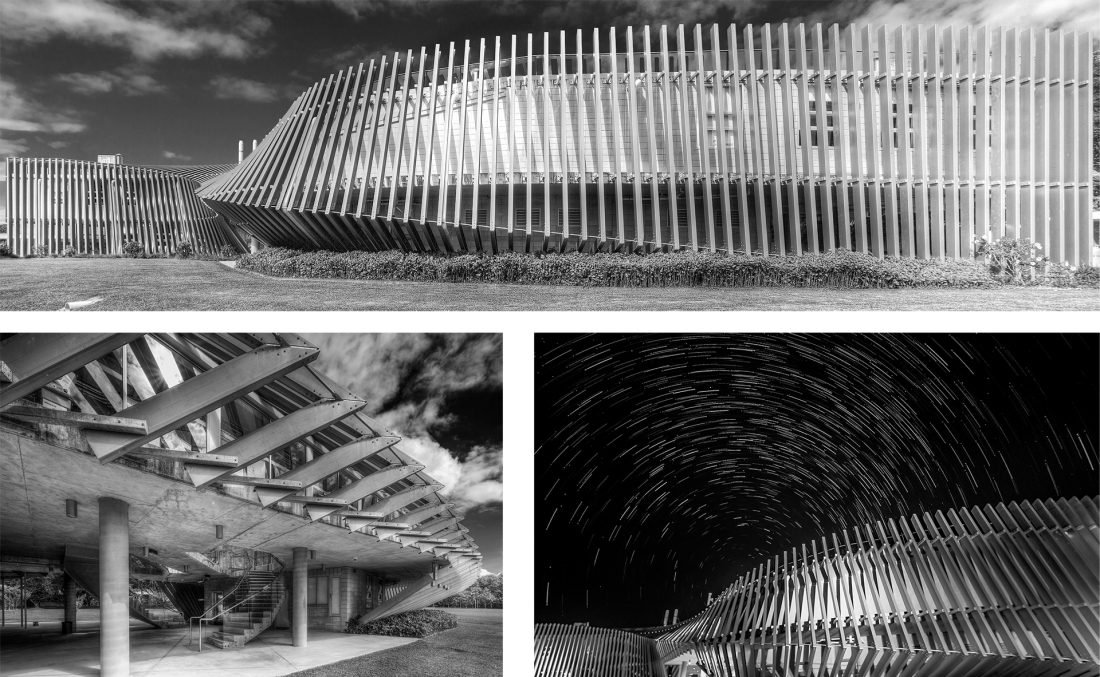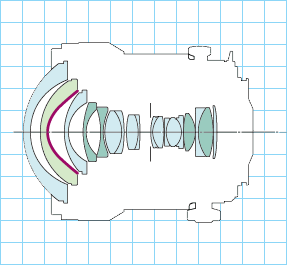
Often, I’ve expressed admiration for the engineering that makes up the innards of the Canon TS-E 17mm f/4L Tilt-Shift Lens. Eighteen lens elements combine to produce a large image circle that permits a lens shift within these confines. Because of the large image circle produced a shift lens can move (shift) the image circle over the sensor plane to capture panoramas and at the same time remain parallel with a vertical plane. This negates the conventional requirement to tilt the lens resulting in converging verticals.
- Eighteen lens elements combine to produce a large image circle
The construction and optical quality of this lens are superb and is without a doubt, my favourite lens. Of course, my favourite lens depends on the subject matter at hand. But in the case of documenting landscapes, urban environments and architecture; this is the tool…. toy I reach for. As an aspiring editorial photographer, the photo essay is pivotal to any documentation and if my subject can also accommodate a shift lens’ photos then I consider this photography to be the icing on the cake.

Further magic performed by a shift lens is the application of the Scheimpflug principle. On a side note, Theodor Scheimpflug of Austria is the person after whom this principle is named. But I was surprised to learn that Mr Scheimpflug himself disclaimed inventing this principle. It is over my head to venture into historical research, but suffice to say this principle is an amazing optical application that can shift the focus plane over the subject resulting in an extensive depth of field. In simplistic terms where the tilt of the planes: lens and sensor Planes (see Figure 2) intersect, everything along this plane of the intersection will be in focus. Basically, the focus plane is tilted along the subject plane. This application is usually applied to landscape photography where depth of field can extend to infinity along the ground without the need to stop the lens down … magic!

In compositional terms, strong foreground elements can be linked to the background as the depth of field extends to infinity.
As an aspiring editorial photographer, I consider myself a jack of all trades and master of none. But if I were to master one area of my photographic interest it would be to acquire an in-depth knowledge of the operation and application of this optic.
I believe this lens emulates the functionality of a view camera and being a manual focus lens, there’s much to learn so as to utilise its full shift/tilt potential. At this point, I should point out that the Canon TS-E 17mm f/4L Tilt-Shift Lens is a compromise when compared to the functionality of a view camera as only the lens plane can be tilted. A view camera on the other and can tilt both the lens and sensor planes.
When using a Canon TS-E 17mm f/4L Tilt-Shift Lens forget snap-crackle-pop-auto-everything photography, this beast will slow you down to apply optical basics and manual focus. In other words, this is not an optic for photographers on trainee wheels or those accustomed to iPhone snaps. This lens requires deliberation, methodical application, a tripod and (preferably) live view…. I love it.


